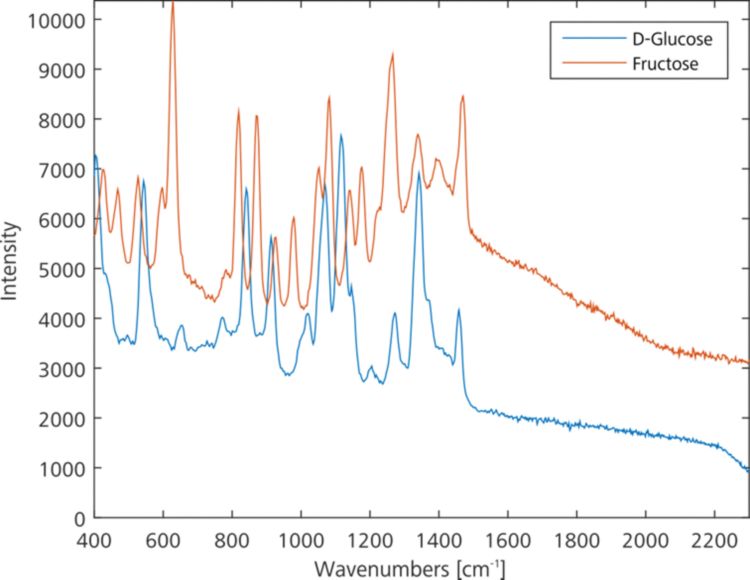This Application Note describes the Raman spectroscopy identification of sugars such as D-galactose, D-glucose, D-maltose, D-mannose, D-sorbitol, fructose, sucrose and inositol. Rapid and non-destructive determination takes place after a suitable spectrum database has been created. Measurements with the portable Raman spectrometer Mira M-1 require no sample preparation and provide immediate and unambiguous results.

Today’s industry, but also daily life, cannot be imagined without sugar. Sugars are used by chemical manufacturers in reactions, by food makers as a flavor and by pharmaceutical drug makers as preservatives, stabilizers, and masking agents for medications. Sugar is a generic term for saccharide and there are three general groups of saccharides: monosaccharides, disaccharides, and polysaccharides. Monosaccharides are the simplest carbohydrate forms and consist of single sugar moieties that become the building blocks for the other saccharide groups. Common monosaccharides are fructose (fruit sugar), glucose (dextrose), galactose (milk sugar).
Disaccharides contain two monosaccharides or twice the sugar moieties. The most common are sucrose (glucose + fructose), lactose (galactose + glucose), and maltose (glucose + glucose). By contrast, polysaccharides are characterized by a repeating pattern of polymerized monosaccharides or disaccharides and result in materials such as cellulose, starches, and glycogen.
In this study, a fast alternative to the typically performed HPLC, FT-IR, colorimetric, and time consuming wet chemical identification and confirmation of commonly used, structurally similar sugars is shown.
All spectra were measured using the Mira M-1 Raman spectrometer in auto acquisition mode, i.e., integration times were determined automatically. A laser wavelength of 785 nm and the Orbital-Raster-Scan (ORS) technique were used. As all of the sugar samples were packed in polybags, spectra were recorded with the point-and-shoot adapter which is suitable for a short working distance (SWD).
The mentioned ORS technique significantly boosts the accuracy, reproducibility, and therefore, the reliability of the measurements, as the laser sweeps over an extended area of the sample surface.
A collection of D-galactose, D-glucose, D-maltose, D-mannose, D-sorbitol, fructose, sucrose and inositol samples were used to build a specific library with the Mira Cal software.

The spectra of all the different sugars used for the library were superimposed. The overlay (Figure 2) shows that each sugar has a unique spectrum that differentiates it from the other analyzed plastics. The spectral area containing the majority of peaks reaches from 400 to 1800 cm-1; proving that the spectral range of Mira M-1 is appropriate for the studied sugar samples.
Figure 3 demonstrates, how the Mira (with the ORS technique) enables unambiguous identification of the structurally similar sugars through high sensitivity measurements of powder or crystalline samples. Fructose a ketose and glucose an aldose, are both monosaccharides with the same chemical composition. These two compounds can easily be differentiated with Mira based on the spectral correlation values.
Taking a look at the correlation values when comparing glucose with fructose or vice versa, one can see the same correlation value of 0.15. This shows the high selectivity of the Mira M-1 Raman spectrometer and also applies on the other substances.
The spectral correlation values which indicate how well the sample spectrum matches the reference spectrum in the library, were higher than 0.99 for all measured samples, while the spectral correlation values are lower than 0.4 when the sample spectrum does not match the library spectrum (see Figure 3).
In this application note, the Mira handheld Raman analyzer is shown to be capable of identification and confirmation of sugar and sugar derivatives used in a variety of industries. Mira measurements are quick and confirmative compared to the traditional wet chemical techniques and give the user the opportunity of a portable solution. For polysaccharide samples such as starch, microcrystalline cellulose, which shows fluorescence effect, Mira XTR instrument is recommended.
 Compartilhar aplicação
Compartilhar aplicação
 Download do PDF
Download do PDF